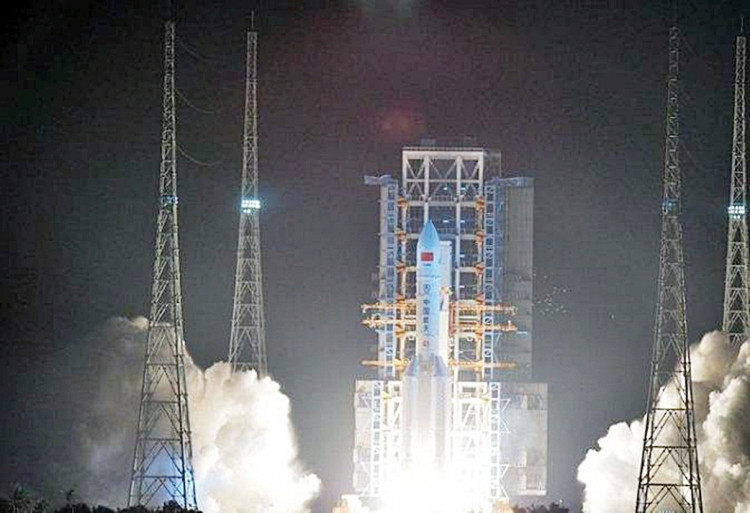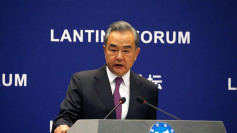After three successful test flights, China's Long March-5 Y4 (or Chang Zheng 5) rocket will launch China's first Mars probe into an Earth-Mars transfer orbit on July 23, and if not by early August. It will be the first actual space mission for Long March-5, China's largest launch vehicle and the world's third most powerful orbital vehicle.
The 878 metric-ton heavy-lift Long March-5 Y4 to be used for the mission was rolled out at the Wenchang Space Launch Center in south China's Hainan Province on Friday, said the China National Space Administration (CNSA).
The Mars probe is part of "Tianwen-1," the mission to send a spacecraft carrying an orbiter, a lander and a rover to Mars. The objectives of the Tianwen-1 mission are to search for evidence of both current and past life on Mars, and to assess the planet's environment.
The spacecraft will arrive at Mars in February 2021. The rover is stowed inside an entry vehicle atop the orbiter. It will remain attached to the orbiter in Mars orbit for about three months before the landing attempt. The Mars probe mission is the first step in China's planetary exploration project.
The Tianwen-1 orbiter carries 12 payloads, seven of them science payloads. It will carry a high-resolution camera comparable to HiRise aboard NASA's Mars Reconnaissance Orbiter.
It will also carry a medium-resolution camera, a mineralogy spectrometer, subsurface radar, neutral and energetic particle analyzers and a magnetometer.
On the other hand, the orbiter will operate for one Mars year (687 Earth days). It will also relay messages from the solar-powered mission rover, which weighs 240 kg. The rover will attempt to land in a southern part of Utopia Planitia where it will hopefully survive for 90 Mars days.
It's nearly twice the mass of China's Yutu lunar rovers. The rover will carry ground-penetrating radar, a multispectral camera and a Laser Induced Breakdown Spectroscopy instrument. Other payloads will analyze the climate and magnetic environment.
"The coming launching mission has been highly recognized and supported by the international community," Ge Xiaochun, CNSA chief engineer, said. "We hope to contribute Chinese wisdom, ideas and solutions to the world for peaceful use of the space."






